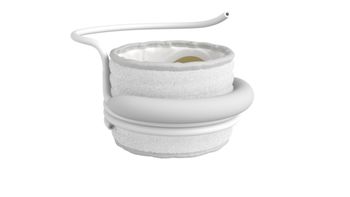
Cash balance plans: What physicians need to know
Cash balance plans can help physicians save on taxes
Now that 2021 is underway and the hectic end-of-year is over, there is another deadline to consider.
It’s late February, and a good time to discuss taxes for 2020. A retirement account is the best way to reduce taxes for physicians. A cash balance plan is often overlooked retirement strategy for self-employed physicians. A carefully designed cash balance plan can significantly lower taxes for self employed physicians and business owners.
So, what is a cash balance plan?
A cash balance plan is a type of defined benefit plan. The cash balance plan is called a hybrid plan, since it is a DB plan that looks like a 401k plan where an employee receives a statement of his/her account balance at the end of each year. This value is based on the accumulated value of Contribution Credits (defined in the plan as a percentage of pay or flat amount) and a guaranteed investment return (about 5% interest credit each year). This plan type includes employer contributions, but in this case the employer establishes a flat amount or percentage of employee salary, and this standard is written into plan documentation with little flexibility to adjust the terms. The owner can accumulate as much as $2.8-$3million upon retirement at age 62 in a Cash Balance Plan.
Can I still open a cash balance plan and contribute for tax year 2020?
Yes, you can still adopt cash balance plan for year 2020. The SECURE Act at the very beginning of 2020 extended the deadline for small businesses to adopt Cash Balance Plan by their tax filing deadline.
What is the best way to design the cash balance plan?
A cash balance plan works best and cost effective if paired with a 401k Plan, since it would be easier to pass the non-discrimination testing. You can also exclude Highly Compensated Employees (whose pay exceeds $130,000). Another consideration is that you can exclude certain employees by job classifications such as nursing practitioners or physician assistants etc., if needed. You can also freeze a cash balance plan and suspend contributions if required after amending the plan.
What is the drawback of a cash balance plan?
It’s important to understand that the contribution amount in a Cash Balance plan is not discretionary like other retirement accounts and it’s designed to be a long-term plan. Also, if you have employees, they need to be included in the plan. Usually, financial advisors work with an actuary to design the plan for the employers to maximum the owner’s contribution without incurring too much employee cost. Also, cash balance plan is not an ideal plan if you have a lot of non-highly compensated full time older employees and only one owner; the employee cost is usually significant in this case. Cash balance plan is designed to have consistent level of contribution every year, but the amount can be changed, and the plan needs to be amended.
How much can I contribute to a cash balance plan?
The final contribution amount depends on age, wage, and legislative interest rate but generally a self-employed 60-year-old individual can contribute north of $250,000 into this type of plan for 2020.
The following sheet shows different contribution level in retirement accounts and potential tax savings.
*assuming a 35% tax rate
** 60-year-old with a 3-year average pay of $285k. Actuary needs to run calculation for final number.
Each type of account comes with complicated rules, and each business owner’s situation is unique. In order to maximize tax savings while keeping in the clear in terms of regulations, be sure to work with a fiduciary financial advisor who will guide you to make the best decisions for yourself and your business.
Securities offered through Securities America, Inc., member FINRA/SIPC. Advisory services offered through Securities America Advisors, Inc. Wall Street Alliance Group and Securities America are separate companies. Trading instructions sent via email may not be honored. Please contact my office at 646-783-7561 or Securities America, Inc. at 800-747-6111 for all buy/sell orders. Please be advised that communications regarding trades in your account are for informational purposes only. You should continue to rely on confirmations and statements received from the custodian(s) of your assets. The text of this communication is confidential and use by any person who is not the intended recipient is prohibited. Any person who receives this communication in error is requested to immediately destroy the text of this communication without copying or further dissemination. Your cooperation is appreciated. Securities America and its representatives do not provide tax or legal advice; therefore it is important to coordinate with your tax or legal advisor regarding your specific situation.
Newsletter
Stay informed and empowered with Medical Economics enewsletter, delivering expert insights, financial strategies, practice management tips and technology trends — tailored for today’s physicians.








